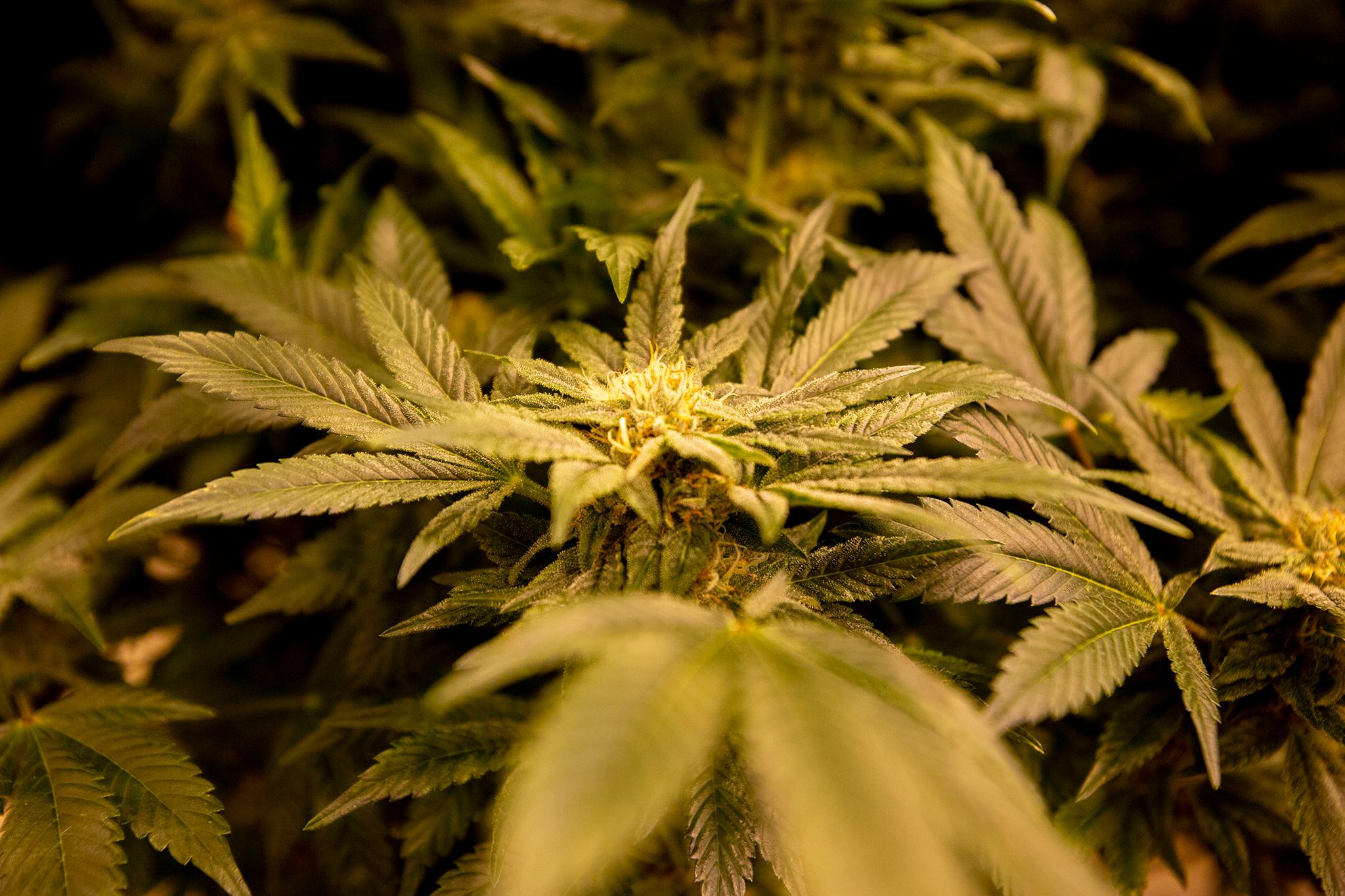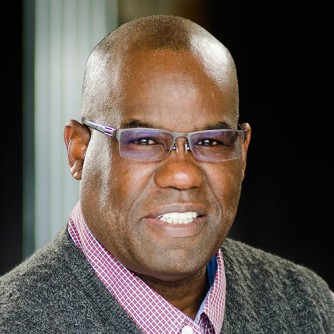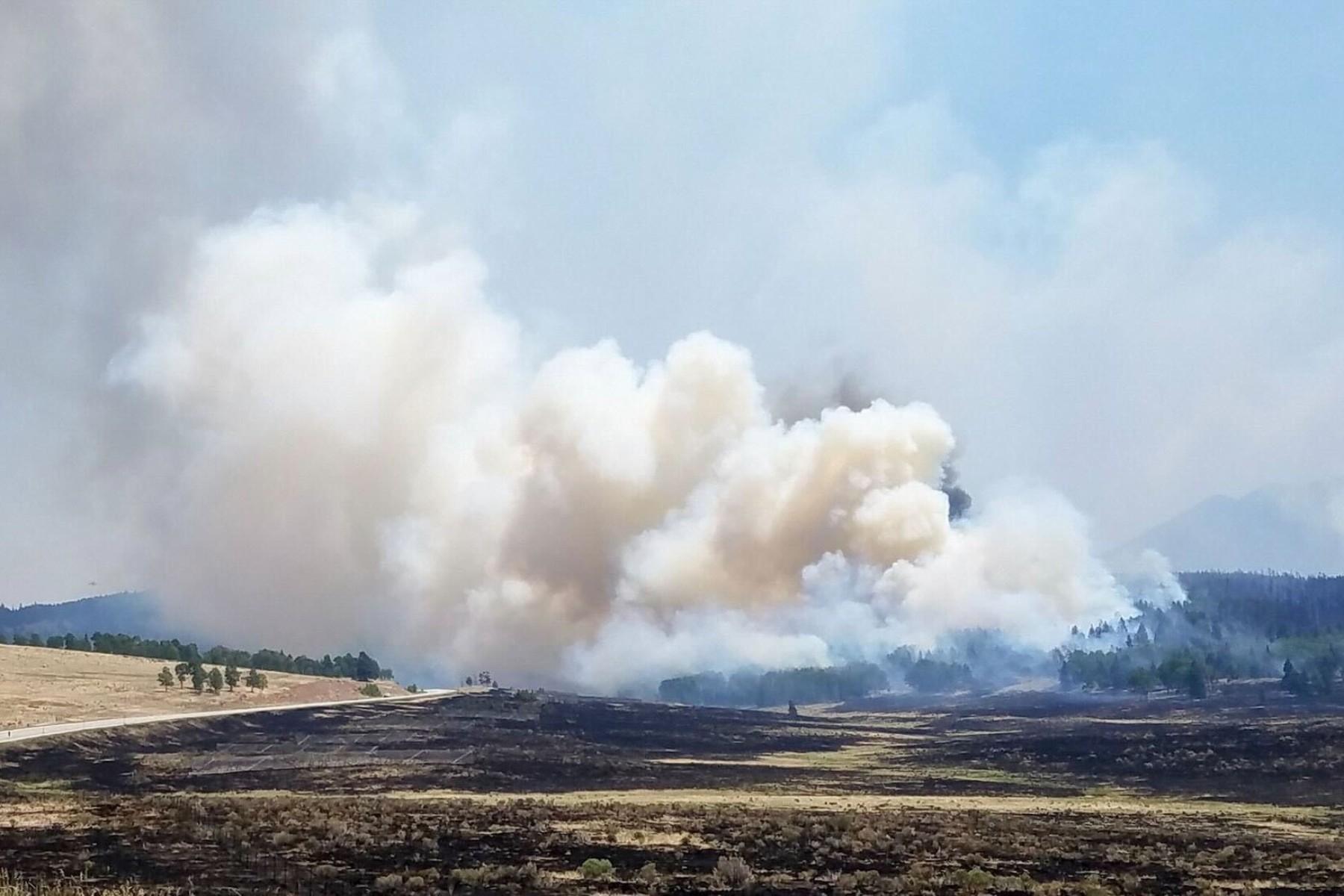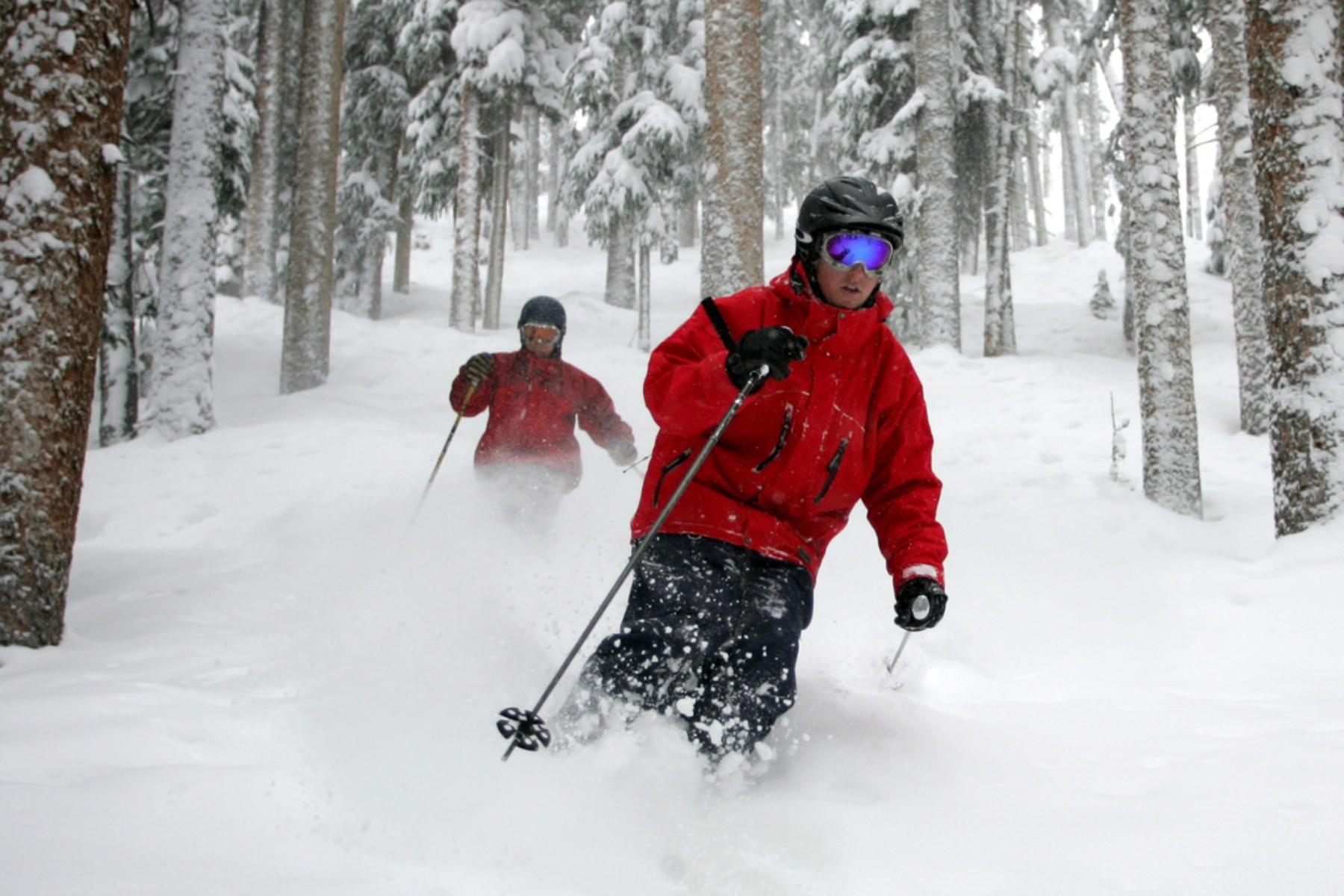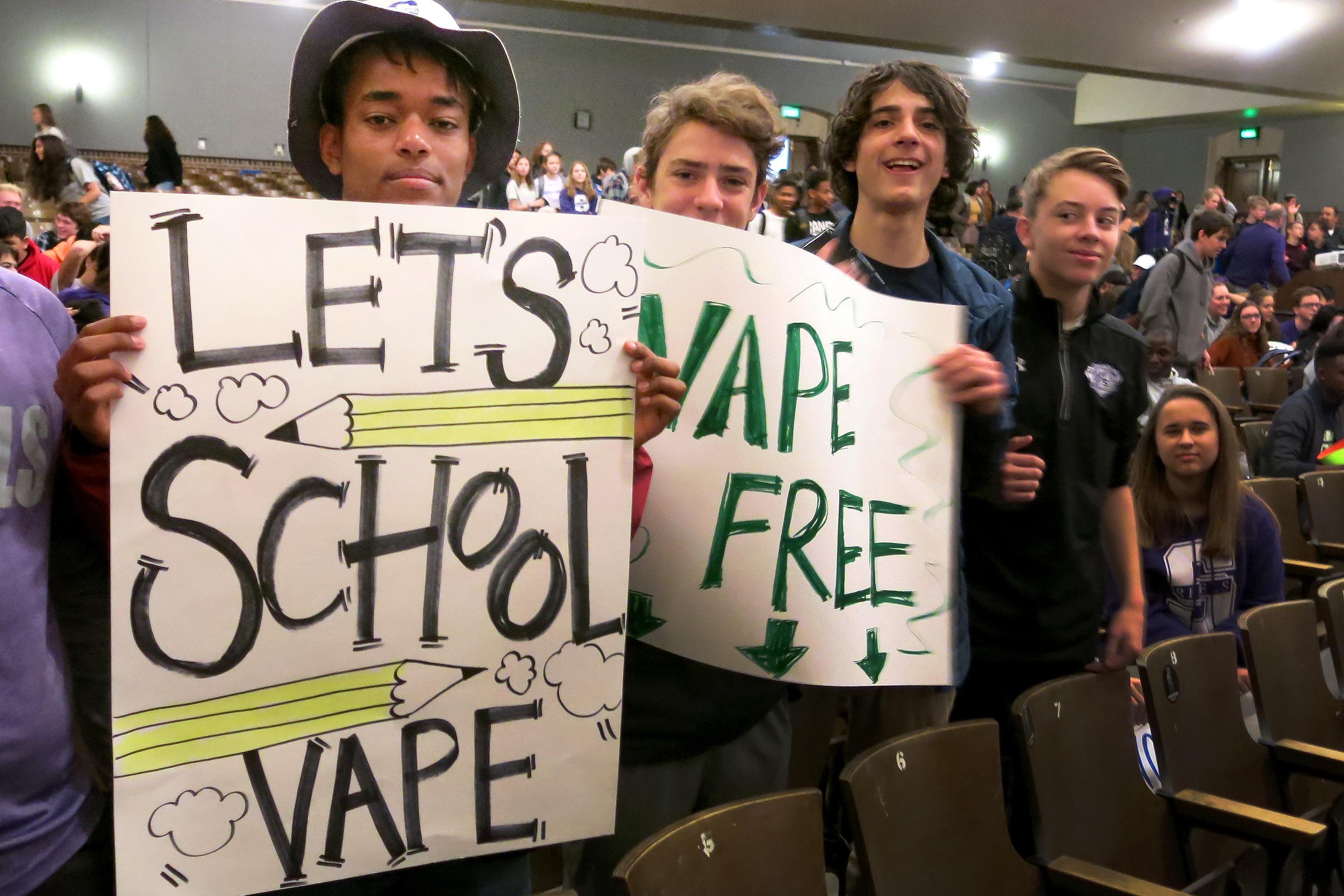

At South High in Denver, cheerleaders in purple and white trot down the aisle of the auditorium as the Rebels marching band rolls in. Up goes a cheer from the students. It seems like a pep rally for the school’s sports team. But it’s not.
“Um, today we’re going to talk about the issue of vaping and Juuling in high school,” senior Colleen Campbell tells the crowd.
The rally aims to take a stand against teen vaping. Students wave bright colored signs that say “No Pods for My Squad” and “Don’t Cloud Our Future.” Then the guest of honor arrives.
“You guys ready to get fired up? Get ready for the day!” Colorado Gov. John Hickenlooper says as the students whoop and holler.
Vaping is so invisible it happens in class. It’s odorless and doesn’t have to create a lot of visible smoke. More than a quarter of Colorado teens surveyed say they currently use an electronic vapor product. That puts Colorado at No. 1 among 37 surveyed states for teen vaping.

Some say social media has made vaping cool. Marwan Nassr, also a South High senior, says “there’s a major lack of knowledge we have in our community and that’s why I think vaping is a big thing here.”
Colleen Campbell thinks there’s another reason why Colorado teens are vaping so much.
“I think the fact that we have legalized marijuana and thus it is something that is more normalized within our state and our society is one of the reasons that we’re one of the number one states,” she says.
When state voters legalized recreational marijuana through Amendment 64 earlier this decade, the e-cigarette industry had just started to take off. Vape companies spent $100 million in national marketing between 2011 and 2014, according to the Centers for Disease Control and Prevention. And more young people began using a vaping device to smoke nicotine or cannabis — or both.

One of the state’s longtime tobacco prevention advocates, Bob Doyle, thinks the students are on to something. The timing was right, something he calls “a perfect storm.”
“We’ve commercialized marijuana more than any other state and probably more than any place in the world,” the former executive director of the Colorado Tobacco Education and Prevention Alliance says. “Part of that is we’ve seen a boom in the marijuana vaping commercialization as well.”
Don Daniels, a teacher at Chatfield High School in Littleton, and the leader of the school’s tobacco education program, agrees that “it starts with Amendment 64.”
“It normalized usage of marijuana in a way that makes other things seem more normal as well,” he says. “It has had a trickle-down effect in other areas. With the simultaneous explosion of (vaping) devices, many of which are convertible to marijuana, things just went hand in hand.”
When asked if he thinks marijuana legalization helped spike Colorado’s teen vaping, Gov. Hickenlooper acknowledged some had raised that concern.
“I mean there very possibly could be a connection,” he said.
Juul Labs, the dominant e-cigarette company, declined to comment about what’s driving Colorado’s teen vaping wave. It’s taken out full-page ads in Denver and across the nation to declare that its products are not for teens, but instead for adults looking to quit smoking conventional cigarettes. Under pressure from the Food and Drug Administration, it recently announced new steps to limit teen vaping.
Meantime, the cannabis industry has questions too.
“What are today’s youth in Colorado consuming” with vape devices, asks Kristi Kelly, executive director of the Marijuana Industry Group. Kelly questions the survey that showed Colorado’s high ranking by pointing out it only asked if teens vaped and how regularly. Kelly says it didn’t ask what they’re vaping.
“Are we talking tobacco, are we talking about cannabis, are we talking about a flavor additive that has no impairing impacts at all?”
Also, Kelly said if the rise in vaping were driven by marijuana, you’d expect youth pot use to go up too. Colorado hasn’t seen that. She says surveys show teen marijuana use in the state has been relatively flat since legalization.
The view from some of today’s teens is certainly different. Lydia Calkins, a senior at Lakewood High, says her peers are “either gonna go for weed or vape, and vape is easier to get their hands on.” Calkins, who has worked for the FDA on vaping sales compliance checks, points out that many products can be altered for marijuana.
“All of this is so appealing to kids that they eat it up,” she says.

The Colorado Department of Public Health and Environment is studying why the teen vaping rate is double the national average. Tobacco communication specialist Alison Reidmohr says there appears to be a link between teens who vape and other high risk behavior, including use of marijuana and prescription pain medicines. There is, however, nothing definitive in terms of research.
“The vaping prevalence is much higher for kids who engage in high risk sexual activity compared to kids who don’t,” Reidmohr says. “It’s the same thing for binge drinking.”
When Gov. Hickenlooper launched the state’s campaign against vaping, some of the state’s health and tobacco prevention leaders saw public policy as clearly driving teen vaping trends. Colorado was an early test market for vaping products, as well as edible and dissolvable flavored-nicotine products, according to R.J. Ours, Colorado government relations director with the American Cancer Society Cancer Action Network.
“I think we had a head start at least,” Ours says. “I think they were available earlier here than they were in markets across the country, so we’ve had a little more time for this product to grow quote, unquote in the market.”
Now some hope public policy can help reverse the trends.
Several mountain communities in Colorado have raised the age to legally buy tobacco from 18 to 21. But Ours said Colorado has no comprehensive statewide regulation of the sale of tobacco products. And thanks to a 45-year-old law, it doesn’t license the retail sale of them.
“We don’t even allow local governments to do that, in fact there’s a state preemption of that with a fiscal penalty on communities that do try to regulate the sale of tobacco products,” Ours says.
Another key: prices. Colorado cigarette and tobacco excise taxes are relatively low. It doesn’t apply tobacco taxes to vaping products at all. That makes them pretty cheap for teens. A pack of four Juul pods costs about $16. It’s the nicotine equivalent of 4 packs of traditional cigarettes that would cost about $24.
Jodi Radke, the regional director with the Campaign for Tobacco Free Kids, points out that teens “respond most heavily to taxation and price increases on tobacco.” The interim director of the state health department, Karin McGowan, agrees with a price-point approach since “youth have a lot less discretionary income than adults.”
The 2017 Healthy Kids Colorado Survey showed 58 percent of kids say it’s easy to get e-cigarettes. Of the kids they asked, just half think vaping is risky. Conversely, 87 percent see conventional tobacco smoking as risky.
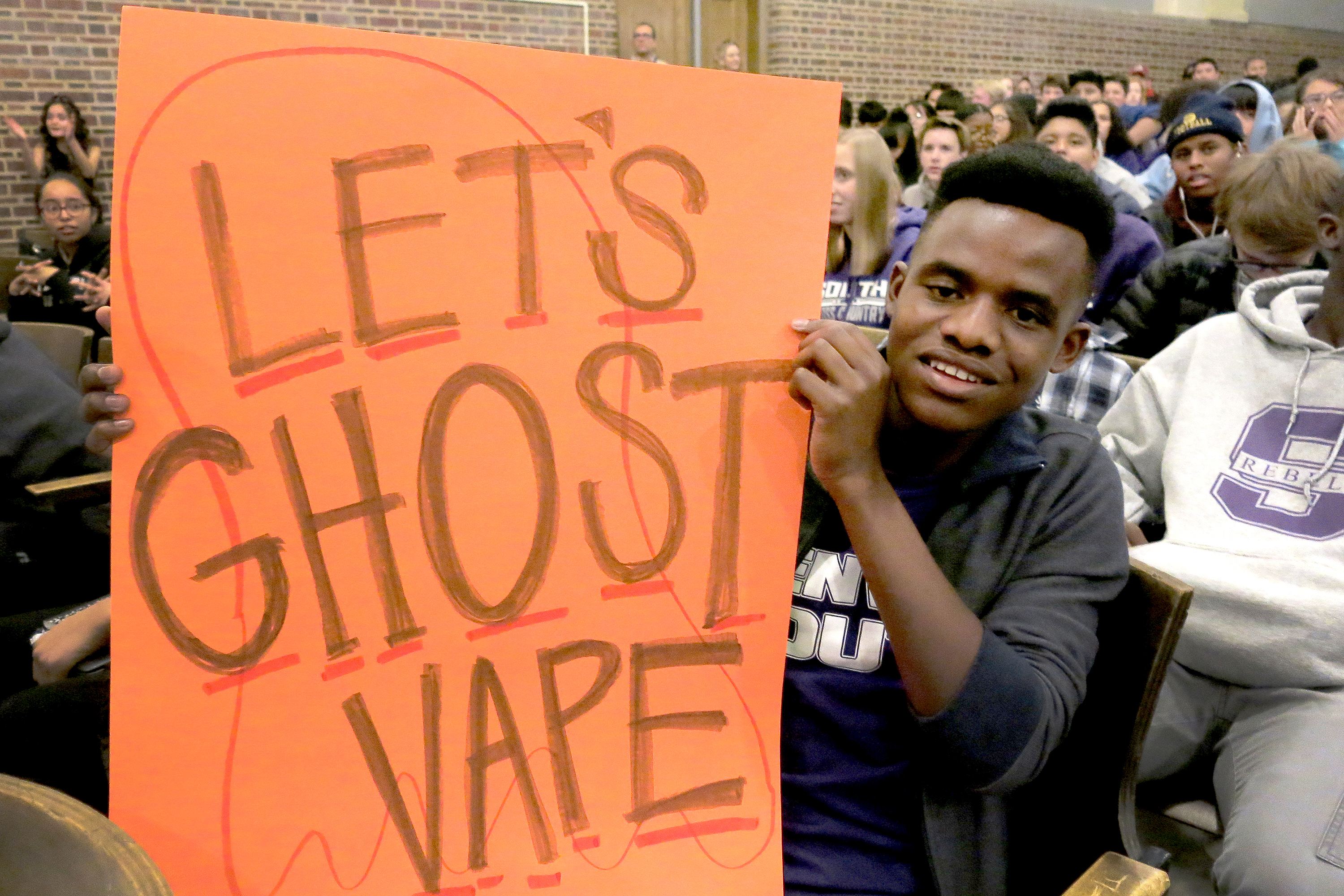
The governor is pushing back with an executive order that takes on the issue on several fronts: taxes on vaping products, stricter licenses for sellers and restrictions on candy-sounding flavors that appeal to kids. Hickenlooper’s tobacco prevention blueprint also recommends state lawmakers raise the minimum age of purchase from 18 to 21 for tobacco and vape products, and to consider the ban of flavored tobacco and e-cigarette items.
Tista Ghosh, the state’s interim chief medical officer, said the state needs to act quickly. She worries that vaping tobacco, and other stimulants, will become a social norm for a whole generation. “In the 1960s, about 45 percent of U.S. adults smoked. It wasn’t about a certain group. It was the norm,” Ghosh says. “It was Mad Men. And I don’t want us to be the Mad Men of vaping.”
Back at South High, the governor asks students to take responsibility for their health. “If you’re going to ingest something, stick to oxygen,” the state’s outgoing top politician tells the students.
Hickenlooper then led a chant that’s probably a ‘first’ for this auditorium: “No More Vape Tricks! No More Vape Tricks!”

